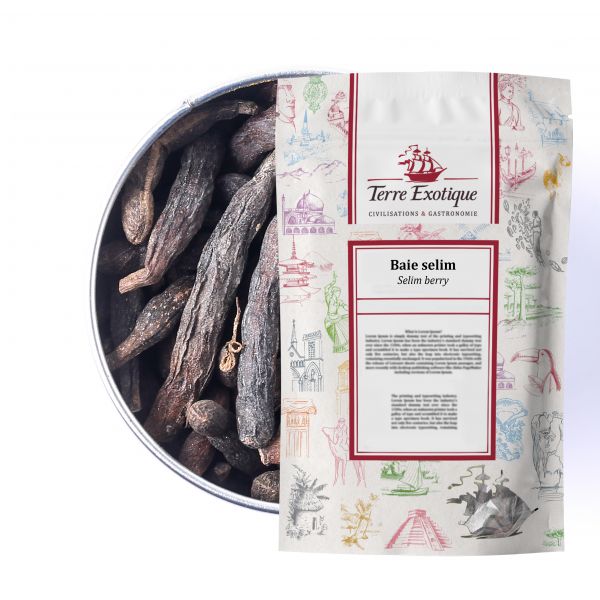



Using Selim Berry in Cooking
This unique-flavored berry is traditionally used as a substitute for regular black pepper (Piper nigrum). Let the potent aromas of selim berry inspire you and tantalize your taste buds in your culinary creations.
Suggestions for Using Selim Berry in Your Dishes
In Africa, selim berry is often smoked over a wood fire and then ground using a mortar and pestle to be used as a pepper substitute. It elevates fish dishes, vegetable soups, or grilled meat skewers. Selim berry pairs wonderfully with dishes like oven-roasted veal served with thyme carrot puree or sea bass with crisp vegetables.
It can also be infused in marinades or used ground in sauces and dressings. Selim berry brings a touch of originality to mashed potatoes, vegetable sautés, dishes with sauces, or stews. It particularly complements potatoes, zucchini, carrots, sweet potatoes, and pumpkins. It's an ideal ally to elevate your dishes with a hint of uniqueness. When paired with fish, seafood, or crustaceans, selim berry will create a sensation and delight your taste buds and those of your guests!
Its usage even extends to desserts because selim berry pairs perfectly with chocolate.
In What Form to Use Selim Berry?
Selim berry can be consumed in its entirety; the shell does not separate from the seeds it contains. It can be used crushed or ground. It's best to add it at the last moment, just before serving.
The Musky and Woody Aromas of Selim Berry
Its scent evokes a mix of smoked herbs with bitter cocoa and lemongrass notes. In the mouth, selim berry is almost non-spicy and very fragrant. It has fruity notes, enhanced by subtle freshness, reminiscent of flavors like ginger, turmeric, cardamom, or cubeb pepper. The bitterness of the seeds is balanced by the sweetness of their pods.
Selim Berry and Its Botany
Where Does Selim Berry Come From?
Selim berries, also known as "poivre de Selim," are the dried fruits of the Xylopia aethiopica species, belonging to the Annonaceae family. This tree grows wild in tropical Africa, including Nigeria, Ethiopia, Togo, Cameroon, and Côte d'Ivoire, and can reach heights of up to 20 meters. It often grows along riverbanks.
Origins of Selim Berry
This berry is a staple in African cuisine. In Nigeria, it is part of the Suya spice blend (ginger, peanut, onion, garlic, salt, cayenne pepper, selim berry) used by street vendors for grilled beef or chicken skewers. In Senegal, Selim berries, or "Kili," flavor the famous Café Touba, a delightful blend of coffee beans, cloves, and selim berry.
Did you know? The tree from which selim berry originates is a valuable resource. Its wood quality and termite resistance make it a widely-used material for building construction and carpentry. In the past, this wood was even used by hunters to craft weapons like bows or crossbows.
| Allergen | Absence |
|---|---|
| Native country | SENEGAL |
| Genus and botanical species | Xylopia aethiopica |
| Ingredients | Selim berry |
| Nutritional Info | VN Energie pour 100 g (energy for 100g) : 1239 kJ / 296 kcal VN Matière grasse (fat) : 2 g Dont acide gras saturés (of which saturated fat) : 1 g VN Glucides (carbohydrate) : 69 g Dont sucres (of which sugars) : 0.69 g VN Protéines (protein) : 10 g Vn Sel (salt) : 0.05 g |
| TRACES EVENTUELLES D'ALLERGÈNES | céleri, sésame, moutarde, fruits à coques. |
 Français
Français 